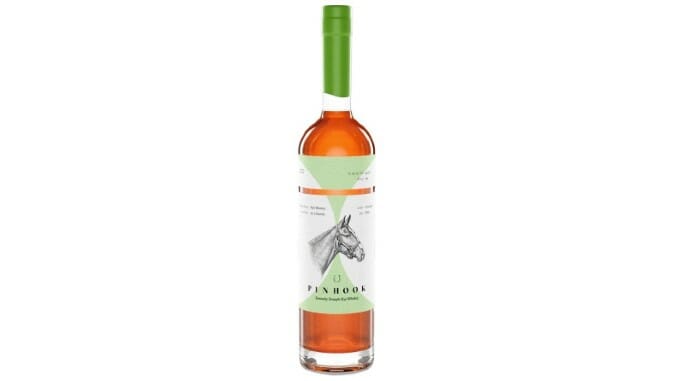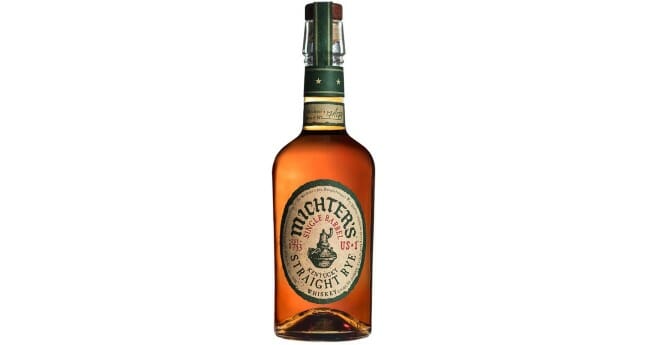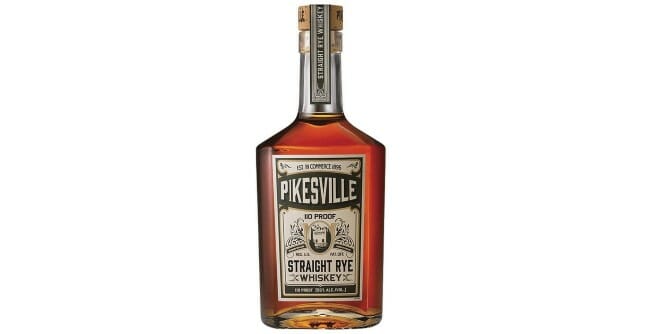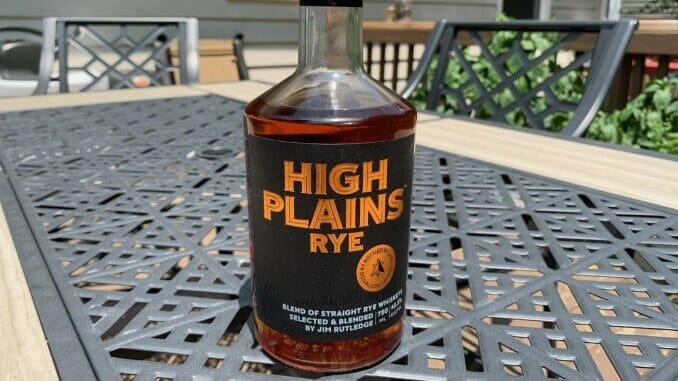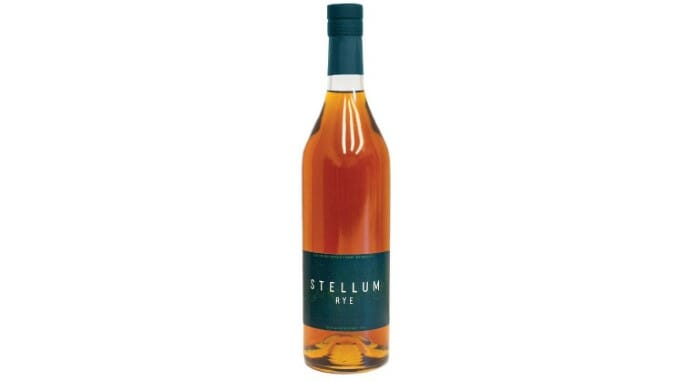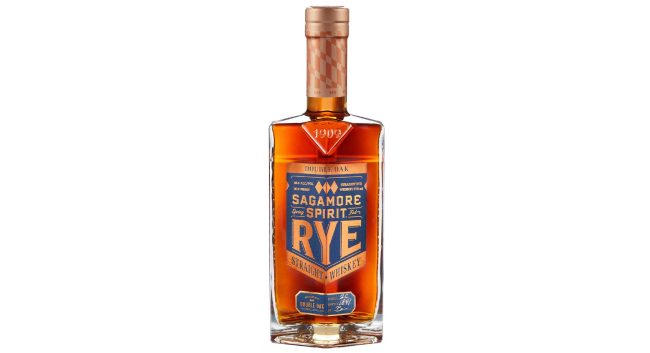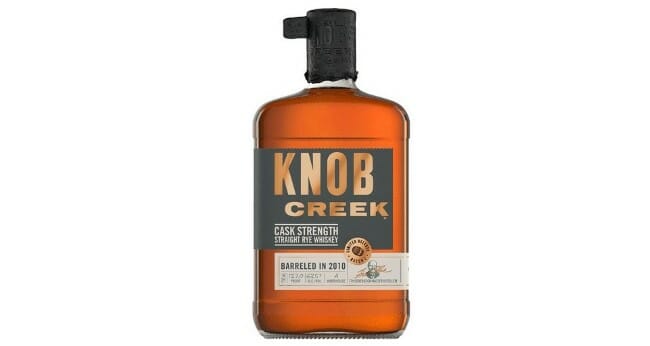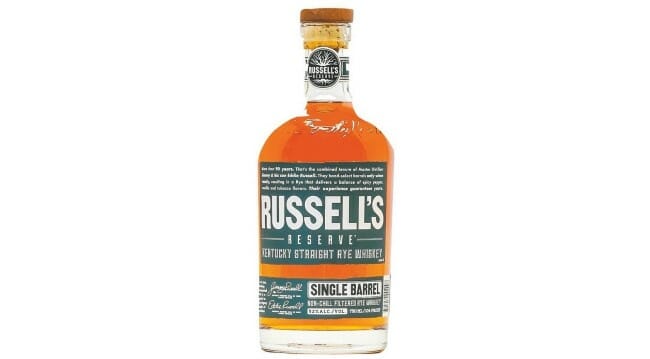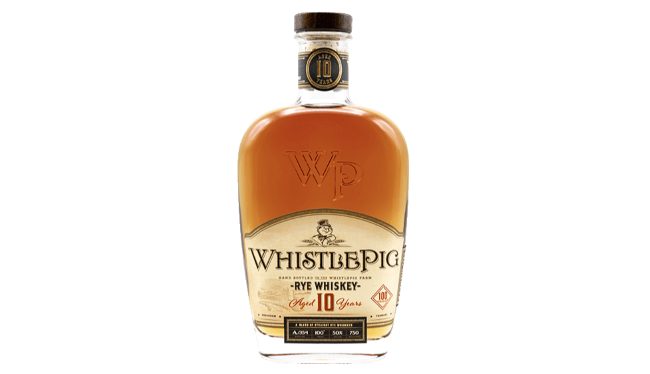What Are the Best Values in Rye Whiskey Today?
Photos via Heaven Hill, Brown-Forman, Jim Beam, Wild Turkey, George Dickel, Buffalo Trace, Sagamore Spirit, High West, Michter's, WhistlePig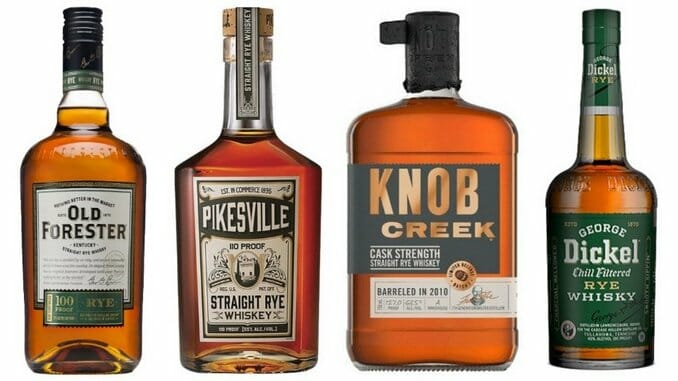
Cocktail Queries is a Paste series that examines and answers basic, common questions that drinkers may have about mixed drinks, cocktails and spirits. Check out every entry in the series to date.
If there’s one contentious topic that whiskey geeks love to discuss, it’s value in whiskey. And as we wrote in our piece on the best pure values in the bourbon world today, value itself is always something of an indefinable concept:
“Value” is notoriously hard to define, given that every consumer has their own idea of what constitutes good value, and what they’re willing to pay for various products. Drinkers who have been around the scene for a long time may find it difficult to accept that any of the whiskeys around right now constitute a great value. That’s thanks to the fact that the price of whiskey has soared in the last decade, as the nation’s rediscovery of brown spirits led to an emerging market for luxe, ultra-premium spirits to cater to the high-rolling whiskey aficionado. These high price tags, in turn, seemed to have a gravitational effect upon the budget brands of yore, pulling them steadily upward. Although attention and debate have often been directed toward the $100 and beyond bottles, it’s been the creep of $10 bottles into the $20 and $30 range that is arguably a bigger deal in the long run.
This was true of bourbon, but it’s especially true of rye whiskey. Once a category poised to go the way of the dodo just a decade or so ago, rye came roaring back during the American cocktail renaissance, transformed seemingly overnight from dusty old bottom-shelf stalwart to the sexy new backbone of the mixology/brown liquor revival.
And unfortunately, that has led to some seriously inflated prices across the board, when it comes to rye. In fact, there’s far less of a traditional “bottom shelf” in rye than there is in bourbon, because even the older brands have risen in price tags to match the majority of the bourbon mid-shelf. This has created a market where the “average” rye is often more expensive than the “average” bourbon, even if it’s bourbon that more routinely commands top dollar on the high end. At the same time, however, a new wave of affordable mid-shelf ryes have arrived in the last few years, which have helped to make the category more accessible to the masses who are still discovering the joys of bourbon’s spicier cousin. Just look for the ubiquitous green labels that every distillery decided goes hand in hand with “rye.”
Here then, are our thoughts on the best current values when it comes to rye whiskey, split into two price tiers.
The Best Budget Rye Whiskey ValuesMSRPs: Less than $40
It’s more difficult to decide on tiers in the rye whiskey world than it is for bourbon, because there’s much less of a “bottom shelf rye” market. Sure, there’s the likes of Beam’s Old Overholt and co., but if we’re being honest, we’re not huge fans of that stuff. Whereas there are $10 bottles of bourbon we’re legitimately happy to drink, quality bottles of rye whiskey start showing up around the $20 mark. And so, we’ve simply divided this into two categories: “Affordable” rye whiskeys, and slightly less affordable ryes in a higher tier that still offer good value for one reason or another.
First up: Ryes under $40, which will be staples for your home bar and whiskey cocktails.
Wild Turkey RyeDistillery: Wild Turkey
ABV: 40.5% (81 proof)
Price: $20
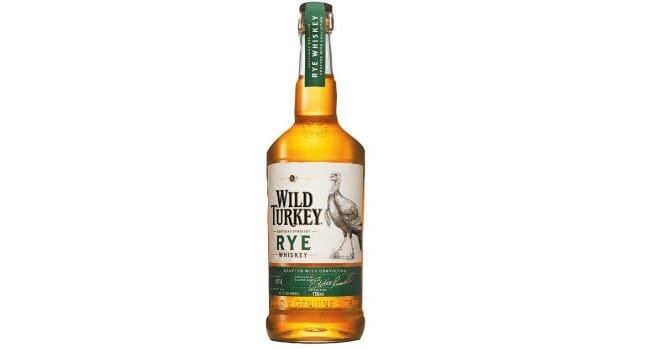
Wild Turkey is perhaps the most consistently high-value American whiskey distillery, and you just can’t argue with a classic Kentucky rye at a price that regularly dips below $20. This is available in both the standard 81 proof and as the rye version of Wild Turkey 101, although the latter doesn’t seem to be nearly as ubiquitous as its more famous bourbon brother—and now that the company has just introduced Rare Breed Rye around 110 proof, one would think there’s not quite as much room for the 101 in the market. So we’re assuming you’ll mostly see the classic 81 proof here, which is fine—it’s one of the best you can get at such a low price.
Flavor wise, this is pretty classic Kentucky rye, grain-forward and spicy, with nuances of mint, rye bread and corny sweetness. You might get some apple fruitiness, cinnamon or vanilla, but it’s a low threshold of flavor intensity that you’d expect for the proof. It’s a perfect mixer for your casual weeknight cocktail or mixed drink, which is exactly what it’s intended to be. And the price can’t be beat.
George Dickel RyeDistillery: George Dickel (via MGP of Indiana)
ABV: 45% (90 proof)
Price: $20-25
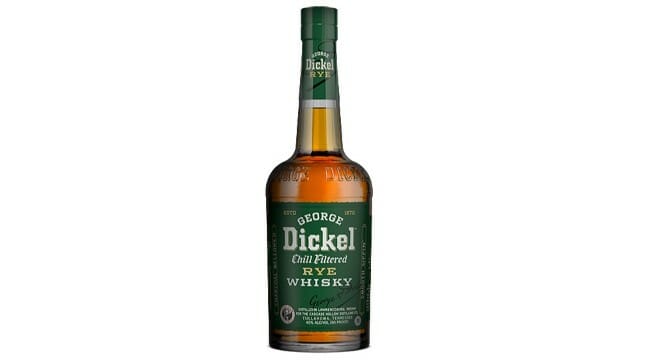
The elephant in the room, when it comes to American rye whiskeys, is always MGP of Indiana. The midwestern mega-distillery provides its famous 95% rye (and 5% malted barley) whiskey to an uncountable number of other distilleries both small and large, and was indispensable in allowing many young craft distilleries to get into the rye game. As a result, there are a crazy number of ryes on the shelf, especially under the $50 mark, that all contain similar MGP juice, whether it’s Bulleit Rye, Redemption Rye, Templeton Rye or many others. Everyone has their favorite of these MGP ryes, but the one that doesn’t always get noticed is the best pure value of the bunch: Dickel Rye.
This is a decently aged (five years) version of the MGP rye, bottled at a respectable 90 proof, and finished with Dickel’s typical Tennessee whiskey-style charcoal filtration. Oddly, it doesn’t exactly present like most of the other, comparable MGP ryes that are heavy on that famous “dill pickle” note—rather, it’s more rich and redolent in brown sugar, while also being citrus forward. We get flavors of flamed orange peel and dark fruit (cherry), followed by the expected rye spice and black pepper. On a budget, this is one of the best pure values in rye today, and it can go toe to toe with many bottles that are twice the MSRP.
Rittenhouse RyeDistillery: Heaven Hill
ABV: 50% (100 proof)
Price: $20-30

Rittenhouse Rye has been around the block a few times, but it’s as good as it ever was and then some. Heaven Hill’s classic cocktail rye is bottled in bond and can boast the 100 proof point that this entails, which makes it an obvious choice for “up” drinks such as the classic Manhattan, where you don’t want a weaker rye to get lost against sweet vermouth. Rittenhouse has been a bartender favorite for decades, which led to its rediscovery and increased appreciation in the last decade … which also sadly led to price increases. Still, in the context of the modern market it remains an excellent value, especially if you find it for less than $25.
On the palate, Rittenhouse is a bit unlike other Kentucky-style ryes in the sense that it seems significantly more rye forward than some of them, being less defined by corny sweetness and more purely rye spicy. As we observed when Rittenhouse Rye won our blind tasting of rye whiskeys for less than $25:
Peppery spice and green apple fruitiness merge with orange peel, grain and earthy rye bread, while the high proof hides itself surprisingly well. Dried fruit, grass and pepper linger on the palate long afterward, rounding out a profile that begs to be mixed into any classic cocktail. For under $25 you can’t do better than this, as far as rye whiskey is concerned. Rittenhouse is the bottom-shelf rye king.
Also of note: If you enjoy the flavors of Rittenhouse but want to trade a little bit of proof for extra aging, Elijah Craig Rye is a very smooth choice at just over $30.
Old Forester RyeDistillery: Old Forester
ABV: 50% (100 proof)
Price: $25
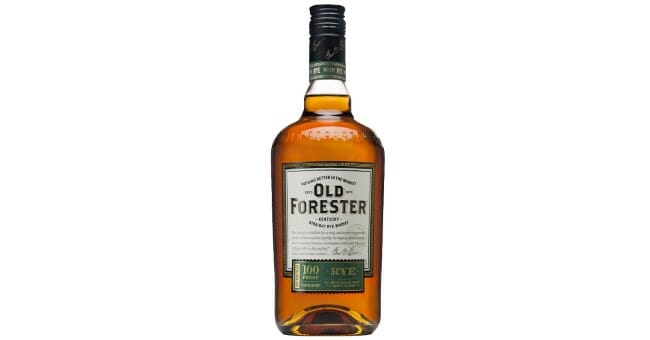
For a while, there seemed to be a significant gap between the bottom shelf ryes and the premium ryes, but companies like Heaven Hill and Old Forester (Brown-Forman) have worked to fill in that space in the last few years, and Old Forester Rye immediately became a very popular and budget-friendly bottle in this space when it was introduced in 2019. Like the Rittenhouse, it weighs in at a cocktail-appropriate 100 proof, and its very development says a lot about the fact that rye whiskey is here to stay, considering that it was the first new mashbill with the Old Forester name on it in just shy of 150 years. It’s a unique mashbill for Kentucky as well, with 65% rye—more than most of the 51% ryes that are typical of the state.
On the palate, this one is a bit thinner of body than most corresponding Old Forester bourbons, but bold in terms of its spicy profile. As we wrote when first reviewing it:
Big black pepper spiciness announces the presence of the rye, with additional notes of apple and rye bread, supported by hints of maple sweetness. As I return to it, I find more of those floral impressions from earlier, and a pine-like woodiness that seems “fresh” and pleasant, if young. Alcohol heat is moderate—it’s there, but this goes down easy for 100 proof. I’m struck by how spicy this is overall, but for the most part it’s a purely peppery sort of spice—not big on the baking spices, aside from some light cinnamon.
Sazerac RyeDistillery: Buffalo Trace
ABV: 45% (90 proof)
Price: $30
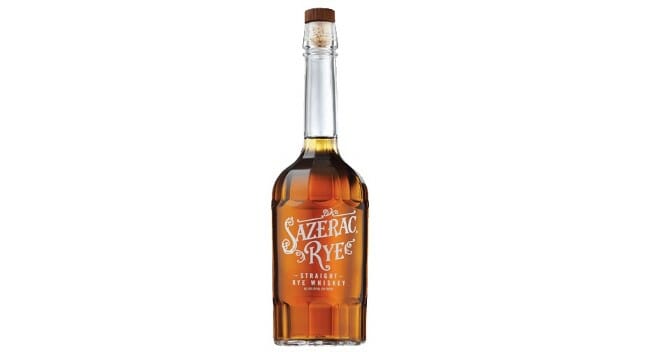
This one costs a bit more than it used to, but compared to the inflation of other products rolling out of Buffalo Trace, it still represents a good value. “Baby Saz,” as it’s often known, uses the same mash bill as is found in highly sought-after Antique Collection whiskeys such as Sazerac 18 Year and Thomas H. Handy Rye, as well as the Van Winkle Family Reserve Rye—it’s simply presented at a lower proof point and with no age statement, although it’s reputed to be between 4-6 years old. That makes it a decent value based purely on the specs, but it’s also much better value than most Buffalo Trace products—just don’t get suckered into being gouged by some package store for it.
Flavor-wise, this is a fruit forward rye, with appealing notes of stone fruit and orangey citrus mixing with traditional Buffalo Trace bourbon tones of caramel and vanilla. You’ll get a hint of darker fruit as well, and maybe some baking spice notes of anise and clove, along with the peppery rye. All in all, this lands on the sweeter side of the younger rye spectrum, and makes for an easy sipper. You may want more proof points for making literal sazerac cocktails, but this will certainly make a very easygoing drink if you choose to use it for that.
High West Double Rye!Distillery: High West Distillery
ABV: 46% (92 proof)
Price: $30-35
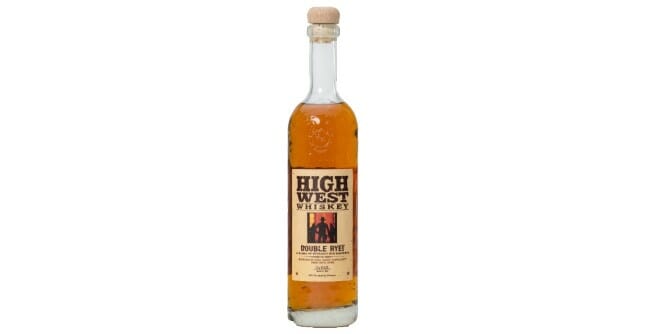
High West is a great example of distillery that built itself up via sourced whiskey, but always sought to make that whiskey their own by transforming it in some way before it was released to the public. The classic Double Rye! is just what it sounds like—two different rye whiskeys, blended together. On the older end, you have well-aged MGP 95/5 rye with a 7 year age statement, but then High West is also chipping in their own house-distilled young rye, which has the added unique factor of being made with 20% malted rye.
The result is a complexity that is hard to get from just one distillate, which is something that makes Double Rye! stand out at this price point. It has a spicy complexity on the palate, with lots of anise, dill, cinnamon and herbal/vegetal notes, supported by slightly richer tones of cocoa and vanilla. This is a drier sort of cocktail rye, more in line with the MGP house style overall, meant for cocktails or for neat drinking if you’re the sort of whiskey geek who appreciates the sometimes divisive flavors of pure rye.
-

-

-

-

-

-

-

-

-

-

-

-

-

-

-

-

-

-

-

-

-

-

-

-

-

-

-

-

-

-

-

-

-

-

-

-

-

-

-

-

